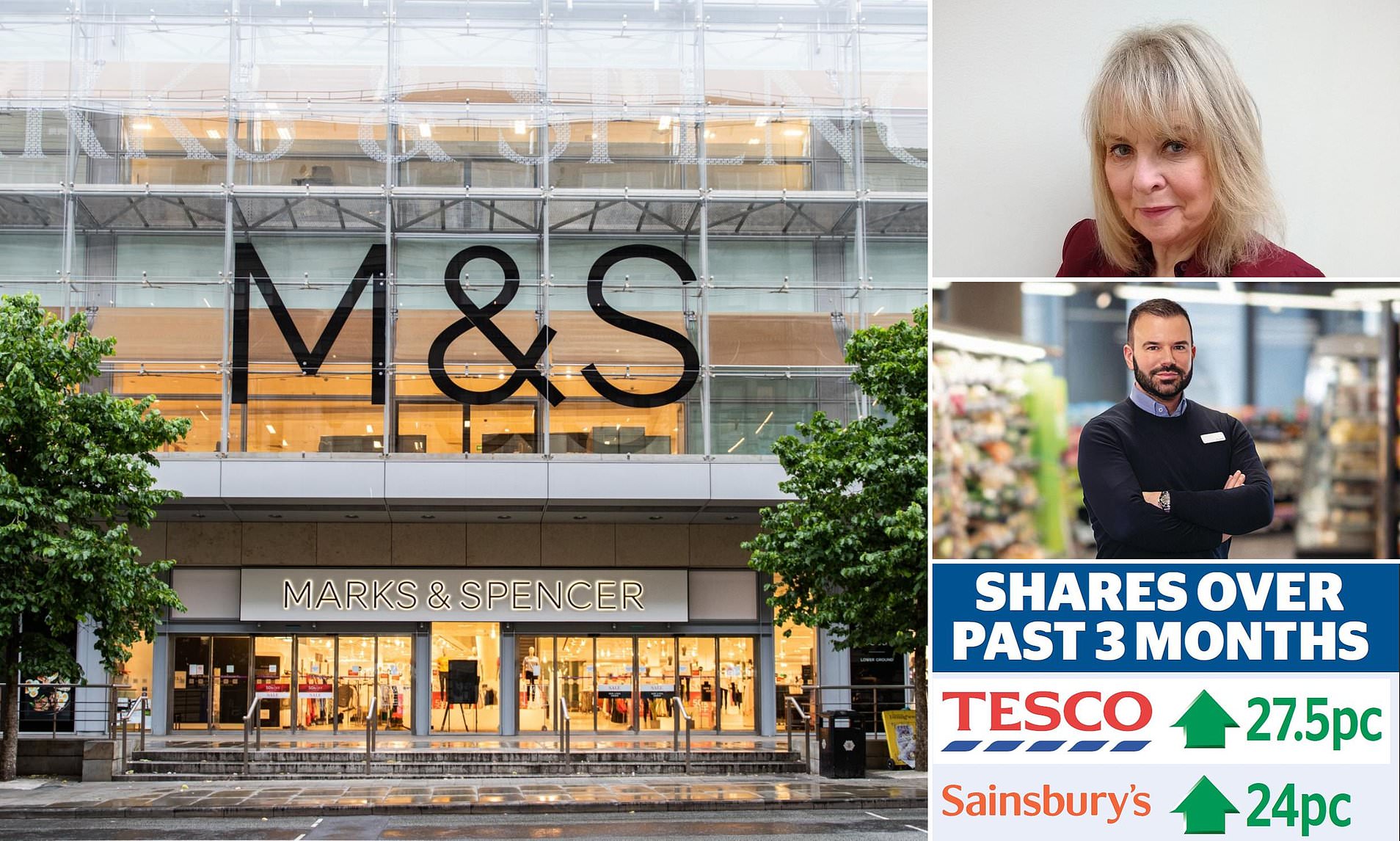Which Stocks to Add to Your Cart as M&S Targets the Supermarkets?

The Supermarket Price War Heats Up
Marks & Spencer has recently stepped up its game in the ongoing supermarket price war. The High Street store has announced its ambition to become a "shopping-list retailer," where families can purchase not only food but also cleaning products, toothpaste, and other essentials. This move reflects a broader strategy to attract more customers by offering a wider range of products.
M&S currently holds 3.8% of the grocery market and has already gained more weekly shop customers. However, the company is undergoing a significant transformation following a cyber-attack earlier this year. As chairman Archie Norman acknowledged, the incident could have been catastrophic for M&S if its financial position had been weaker. Four individuals have been arrested in connection with the crime, signaling a serious response from authorities.
While competitors may not yet be alarmed by M&S's goals, the company's determination to "come back stronger" is a clear signal to investors to reassess their investments in the sector. With the upcoming autumn Budget expected to introduce stealth taxes, supermarkets are preparing for increased cost-of-living pressures. In this environment, supporting food companies can be seen as a defensive strategy, as families may cut back on other expenses before reducing their grocery spending.
Despite these challenges, customers will still seek out great choices and the best deals. For those looking to identify potential winners in this competitive landscape, understanding the current market dynamics is essential.
The Rivals in the Market
The competition in the UK grocery market involves several major players. FTSE 100 companies like Tesco, Sainsbury’s, and M&S face off against private equity-owned groups such as Asda and Morrisons, as well as German discounters Aldi and Lidl. Waitrose, part of the John Lewis partnership, also plays a role in this dynamic market.
Tesco, the market leader with a 28% share, remains steadfast in its position. It has pledged to match Aldi's prices on 600 products, demonstrating its financial strength and willingness to accept lower profits to maintain its market dominance. Analysts predict profits for this year to be between £2.7 billion and £3 billion, slightly down from last year's £3.1 billion.
Sainsbury’s, with a 15.7% market share, is also making moves to increase its presence. Its price match with Aldi covers 800 lines, showing its commitment to competitive pricing. Asda and Morrisons hold 12.6% and 8.6% respectively, though both face debt challenges. Asda is reportedly negotiating price cuts with suppliers to stay competitive.
Aldi and Lidl, despite facing planning hurdles that have slowed their expansion, still hold 10.3% and 8.1% of the market. Waitrose has a 4.5% share, which M&S aims to capture.
Challenges and Opportunities
The supermarket industry faces several challenges, including the implementation of healthy food standards that could lead to fines for failing to offer discounts on nutritious options. Additionally, changes to loyalty schemes and store layouts are required to encourage healthier shopping habits.
The rise of weight-loss drugs is also influencing consumer behavior. Recent data from Kantar indicates a 0.4% decline in grocery purchases, coinciding with an increase in the use of medications like Ozempic or Mounjaro.
Tesco's Performance
Tesco shares have surged by 30% over the past year, reflecting the company's transformation since the 2014 accounting scandal. Improvements to the Finest range have contributed to an 18% sales increase in the first quarter, appealing to the modern mainstream consumer who values style and quality.
Analysts highlight Tesco's long-term relationships with suppliers, which enable innovation and ensure competitive pricing. Clubcard holders benefit from some of the most competitive offers, and the current share price of 401p is considered a 'buy' by many.
However, Tesco faces challenges, including a £1 billion bill over the next four years due to increases in employers' National Insurance contributions. Investors remain cautious about potential further strains in the coming autumn Budget.
Sainsbury's Strategy
Sainsbury’s has been gaining market share through its luxury food label, Taste the Difference. It also offers a clothing line called Tu and a loyalty scheme called Nectar. Richard Hunter of Interactive Investor notes the company's strong cash flow, allowing for generous dividends and a £200 million share buyback.
Despite these positives, Sainsbury’s faces challenges, particularly with its Argos division, which is seen as a drag on performance. Hedge funds have taken short-selling bets, but the shares have rebounded by 20% over the past three months. Analysts currently rate the shares as a 'hold,' reflecting lingering concerns about non-food segments.
M&S's Resilience
M&S shares have dropped by 13% this year due to the cyber-attack, which disrupted online sales and led to a £300 million loss in operating profits. Despite this setback, the company remains focused on expanding its food division, which was previously the fastest-growing supermarket in the UK.
The goal is to make M&S a go-to destination for weekly shopping. CEO Stuart Machin views the cyber incident as a temporary hurdle rather than a major obstacle. Having invested in M&S at 112p in October 2022, I plan to take advantage of the recent drop to add more shares. Analysts remain cautious, rating the shares as a 'hold.'
Investors are encouraged to monitor the market closely and make informed decisions based on their own judgment. By observing the strategies and performances of all major supermarkets, it becomes clear who is leading the charge in this fierce competition.
Post a Comment for "Which Stocks to Add to Your Cart as M&S Targets the Supermarkets?"
Post a Comment